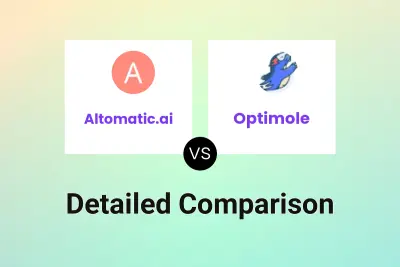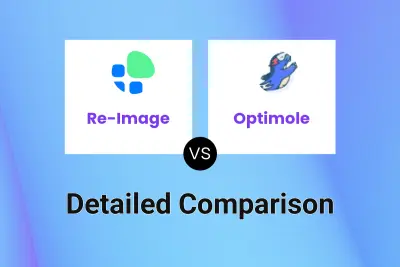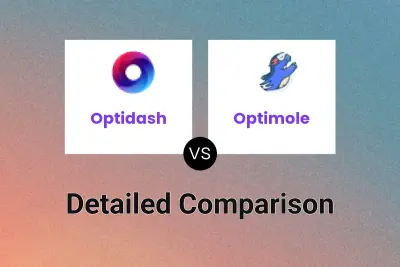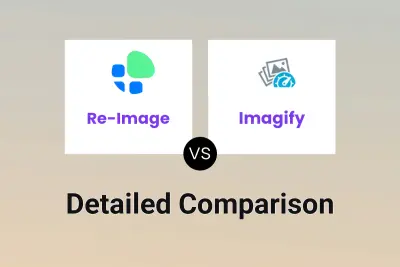 Re-Image
VS
Re-Image
VS
 Optimole
Optimole
Re-Image
Re-Image offers a streamlined solution for managing and delivering digital assets at scale. It leverages Artificial Intelligence through its AI helpers to enhance media files like images and videos automatically. The platform focuses on optimizing these assets for various devices and resolutions, ensuring they are delivered efficiently to end-users worldwide.
By optimizing media and utilizing efficient delivery mechanisms, Re-Image significantly improves website and application load times, which positively impacts SEO rankings and user engagement. It positions itself as a more cost-effective alternative to traditional digital asset management systems by offering fixed, predictable pricing based on storage rather than bandwidth consumption, potentially leading to substantial savings. The platform supports a wide range of file types, including images, videos, audio, PDFs, animations, and documents, aiming to provide faster delivery speeds through techniques like adaptive bitrate for video and next-generation image formats.
Optimole
Optimole streamlines website media management through advanced AI-driven image optimization, adaptive resizing, and real-time transformations. With seamless WordPress integration and an enterprise-ready global CDN, it ensures fast load times and optimal quality delivery across any device, automatically adjusting formats and sizes based on each visitor's connection and device.
Beyond image optimization, Optimole offers a centralized media library, team collaboration tools, and dynamic media transformations including smart cropping, watermarking, and AI-based enhancements. Its platform supports media-rich websites of all sizes seeking automated, efficient, and high-performance digital asset management.
Pricing
Re-Image Pricing
Re-Image offers Freemium pricing .
Optimole Pricing
Optimole offers Freemium pricing .
Features
Re-Image
- Image URL transforms: Modify images on-the-fly using URL parameters.
- Image storage: Securely store original digital assets.
- AI Helpers: Enhance and optimize digital assets using artificial intelligence.
- CDN - global caching: Delivers optimized content lightning quick globally.
- REST API: Integrate asset management and delivery programmatically.
- Multi file support: Handles images, videos, audio, PDFs, animations, and documents.
- Next gen media formats: Delivers modern formats like webP for improved speed.
- Adaptive bitrate technology: Enables over 2x quicker video delivery.
Optimole
- AI-Powered Image Optimization: Uses machine learning algorithms for automatic image compression with minimal quality loss.
- Real-Time Image Transformation: Instantly resizes and adapts images for each device and screen size.
- Global CDN Delivery: 450+ edge locations worldwide powered by Amazon CloudFront for fast media delivery.
- Advanced Asset Management: Centralized media library with organization, tagging, and access control features.
- Next-Gen Format Support: Automatic conversion to WebP and AVIF formats for better compression.
- Lazy Loading: Loads images only when they appear in the user's viewport for improved performance.
- Smart Cropping: AI-based focal point detection for optimal image crops.
- Dynamic Watermarking & Overlays: Apply on-the-fly visual enhancements and branding.
- Video Optimization Add-On: AI-powered video compression and adaptive streaming (optional).
Use Cases
Re-Image Use Cases
- Optimizing website images and videos for faster load times.
- Improving SEO rankings through enhanced page speed.
- Managing and delivering digital assets cost-effectively for e-commerce sites.
- Scaling media delivery for gaming platforms and applications.
- Enhancing user experience on websites and apps with rapid media loading.
- Reducing digital asset management (DAM) costs compared to bandwidth-based platforms.
Optimole Use Cases
- Accelerating WordPress website load times through automated image compression.
- Enhancing eCommerce and agency sites with adaptive image delivery for all user devices.
- Efficiently managing and organizing large digital asset libraries for growing businesses.
- Implementing image optimization in high-traffic, media-rich platforms.
- Streamlining workflows for web developers and designers managing multiple websites.
- Delivering optimized media for global audiences using a high-speed CDN.
- Improving SEO and user engagement by reducing bounce rates with faster image loading.
FAQs
Re-Image FAQs
-
How does Re-Image improve website speed?
Re-Image enhances website speed by optimizing images and videos, utilizing next-gen formats, and delivering content rapidly through a global Content Delivery Network (CDN). -
How does Re-Image pricing compare to platforms like Cloudinary?
Re-Image aims to be significantly more cost-effective by charging a fixed fee primarily based on storage, unlike platforms that often charge based on bandwidth consumption, potentially saving users up to 30x on usage fees. -
What types of media files does Re-Image support?
Re-Image supports a wide array of file types including images (PNG, SVG, webP+), videos (MP4, mov, MPEG+), audio (wav, mp3+), PDFs, animations (GIFs, APNG, JSON), and documents (PPT, DOCX, XLS). -
Does Re-Image use AI in its processes?
Yes, Re-Image utilizes AI helpers to enhance digital assets and optimize media transformation and delivery processes.
Optimole FAQs
-
How many images can be optimized with each plan?
Each plan allows unlimited image optimization across unlimited sites, with specific monthly visit allowances based on the selected tier. -
What happens if I exceed my plan's limits?
If you exceed your plan's visitor limits, you may need to upgrade to a higher plan to accommodate the increased website traffic and continued optimization. -
What CDN does Optimole use for media delivery?
Optimole uses Amazon CloudFront, offering more than 450 global edge locations to deliver optimized images rapidly worldwide. -
Does Optimole automatically serve WebP formats to compatible browsers?
Yes, Optimole automatically detects browser compatibility and delivers images in the optimal format, including WebP and AVIF, for enhanced performance. -
What is the auto-scaling feature in Optimole?
Auto-scaling leverages machine learning to compress images dynamically, minimizing file size while maintaining visual quality for every scenario.
Uptime Monitor
Uptime Monitor
Average Uptime
100%
Average Response Time
165.67 ms
Last 30 Days
Uptime Monitor
Average Uptime
99.4%
Average Response Time
127.37 ms
Last 30 Days
Re-Image
Optimole
More Comparisons:
-

Altomatic.ai vs Optimole Detailed comparison features, price
ComparisonView details → -

Re-Image vs Optimole Detailed comparison features, price
ComparisonView details → -

Optify vs Optimole Detailed comparison features, price
ComparisonView details → -

ImageOptimizer.ai vs Optimole Detailed comparison features, price
ComparisonView details → -

Imgix vs Optimole Detailed comparison features, price
ComparisonView details → -

Optidash vs Optimole Detailed comparison features, price
ComparisonView details → -

Re-Image vs Imagify Detailed comparison features, price
ComparisonView details →
Didn't find tool you were looking for?